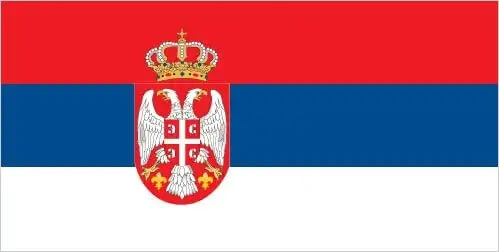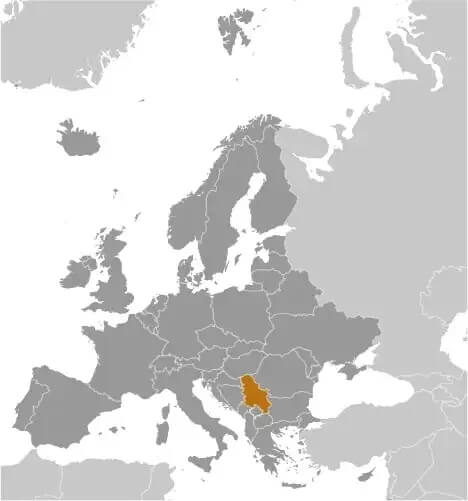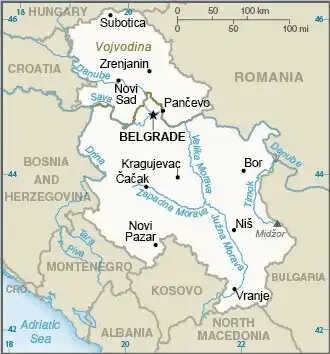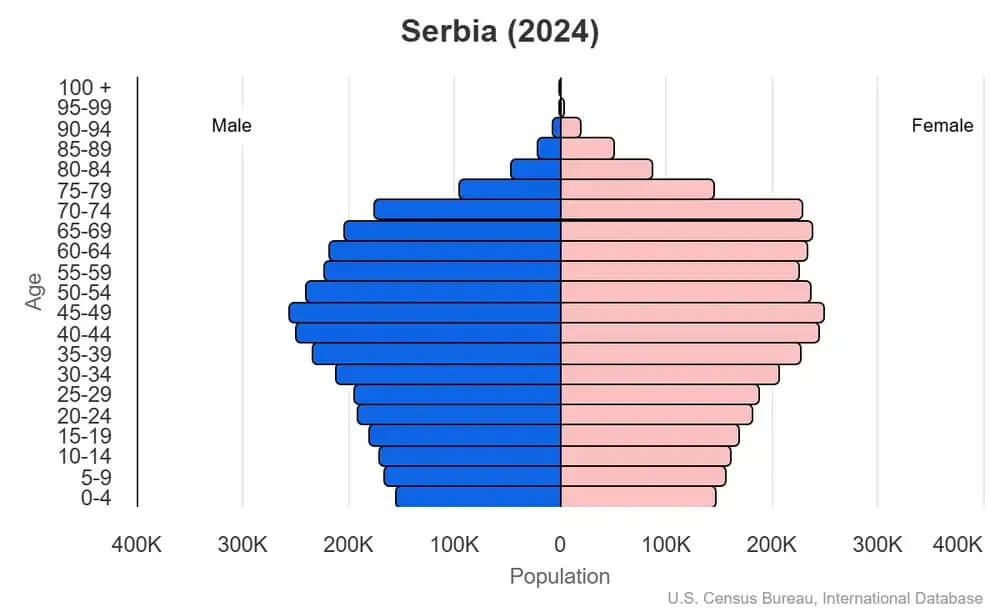World Book
Serbia
World Book Index
79


With a score of 79, the country is ranked 18th out of 158 countries in the World Book ranking. (more information)
Introduction
Background
In 1918, the Croats, Serbs, and Slovenes formed a kingdom known after 1929 as Yugoslavia, which became the Socialist Federal Republic of Yugoslavia in 1945. In 1989, Yugoslavia broke up along ethnic lines, and the ensuing conflicts in Serbia lasted until NATO intervention in 1999. Serbia is currently a candidate for EU membership.
Geography
Area
total : 77,474 sq km
land: 77,474 sq km
water: 0 sq km
Climate
in the north, continental climate (cold winters and hot, humid summers with well-distributed rainfall); in other parts, continental and Mediterranean climate (relatively cold winters with heavy snowfall and hot, dry summers and autumns)
Natural resources
oil, gas, coal, iron ore, copper, zinc, antimony, chromite, gold, silver, magnesium, pyrite, limestone, marble, salt, arable land
People and Society
Population
total: 6,652,212 (2024 est.)
Ethnic groups
Serb 83.3%, Hungarian 3.5%, Romani 2.1%, Bosniak 2%, other 5.7%, undeclared or unknown 3.4% (2011 est.)
Languages
Serbian (official) 88.1%, Hungarian 3.4%, Bosnian 1.9%, Romani 1.4%, other 3.4%, undeclared or unknown 1.8% (2011 est.)
Religions
Orthodox 84.6%, Catholic 5%, Muslim 3.1%, Protestant 1%, atheist 1.1%, other 0.8% (includes agnostics, other Christians, Eastern, Jewish), undeclared or unknown 4.5% (2011 est.)
Population growth rate
-0.61% (2024 est.)
Government
Government type
parliamentary republic
Capital
name: Belgrade (Beograd)
Executive branch
chief of state: President Aleksandar VUCIC (since 31 May 2017)
head of government: Prime Minister Djuro MACUT (since 16 April 2025)
Diplomatic representation in the US
chief of mission: Ambassador Dragan ŠUTANOVAC (since 24 July 2025)
Diplomatic representation from the US
chief of mission: Ambassador (vacant); Chargé d’Affaires Alexander TITOLO (since January 2025)
Economy
Economic overview
upper middle-income Balkan economy; current EU accession candidate; hit by COVID-19; pursuing green growth development; manageable public debt; new anticorruption efforts; falling unemployment; historic Russian relations; energy import-dependent
Real GDP (purchasing power parity)
$177.093 billion (2024 est.)
$170.482 billion (2023 est.)
$164.166 billion (2022 est.)
Real GDP per capita
$26,900 (2024 est.)
$25,700 (2023 est.)
$24,600 (2022 est.)
Exports
$44.352 billion (2023 est.)
$39.905 billion (2022 est.)
$34.035 billion (2021 est.)
Exports - partners
Germany 15%, Hungary 7%, Bosnia & Herzegovina 5%, Italy 5%, Romania 5% (2023)
Exports - commodities
insulated wire, electricity, copper ore, plastic products, electric motors (2023)
Imports
$48.158 billion (2023 est.)
$47.395 billion (2022 est.)
$39.476 billion (2021 est.)
Imports - partners
Germany 12%, China 10%, Italy 7%, Turkey 5%, Hungary 5% (2023)
Imports - commodities
crude petroleum, natural gas, packaged medicine, plastic products, cars (2023)
Human Development Index
The country's Human Development Index (HDI) is 0.833, ranking it 62nd out of 193 countries tested. (more information)
World Happiness Report
The World Happiness Report ranked the country 4th out of 158 countries tested with a score of 7.658. (more information)



